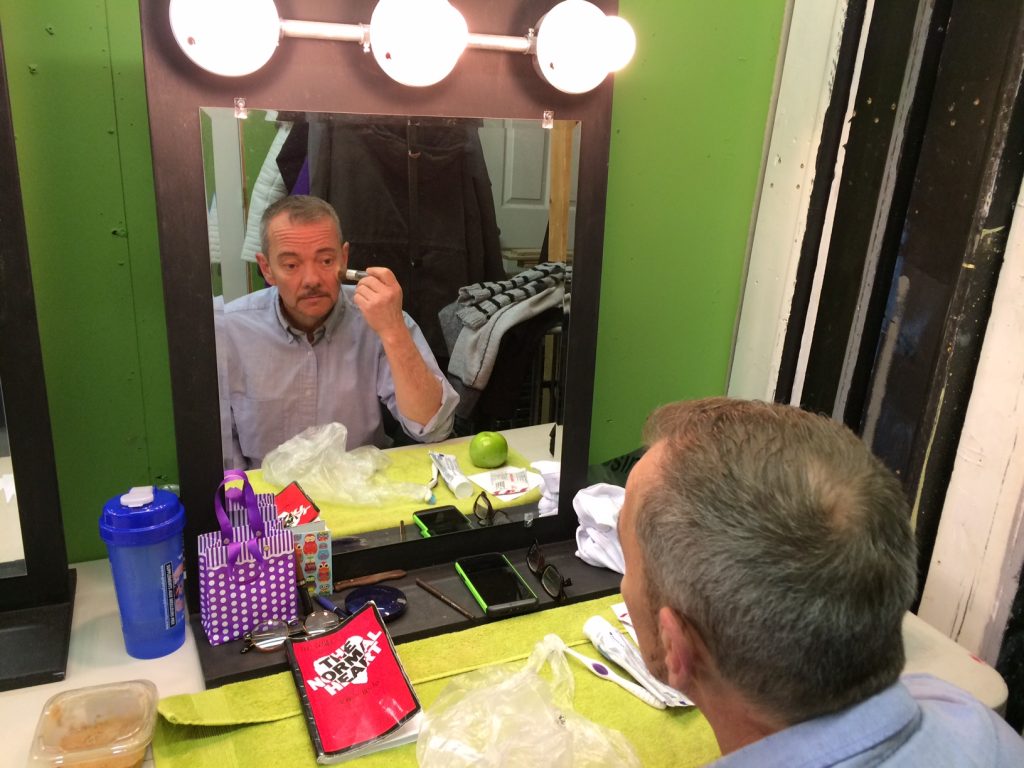“The Normal Heart” sheds light on AIDS crisis, activism
By Meg Sutton
More than 36 million people have died from AIDS since it emerged in the 1980s, and while that number is hard to visualize, the faces of those lost were seen during the Gladstone Theatre’s March production of The Normal Heart.
Director Jim McNabb staged Ottawa’s premiere of the Tony Award winning show at the Little Italy theatre, saying he wanted the audience to understand that “thoughts and prayers do nothing” to alleviate suffering — and to make The Normal Heart a platform to show that “AIDS is still a dire plague today.”
The play is set in New York in 1985, during the beginning of the HIV-AIDS crisis. It depicts Ned Weeks and his struggle as the disease slowly starts to take more peoples’ lives, including those of his friends.
Complacency is the key theme, McNabb said. There was activism and a growing global movement raising awareness about a disease slowly killing the gay community at the time, but the U.S. government was refusing to fund any research.
“Observer mentality is dangerous, because not doing anything doesn’t do anything,” said McNabb.
“So sending thoughts and prayers is exactly what this play is about,” McNabb said. “The thought was ‘they were gays and homosexuals, we should just let them die.’”
The public didn’t really care, he said.
McNabb said the show is a contemporary social commentary because the actors stay on stage for the entire production, so “they are observers just like the audience.” They represent the people who hear and sympathize with any crisis, but still take no action, he said.
There’s a parallel here with mass shootings, natural disasters, or sexual assault cases when social media comments offer “thoughts and prayers,” but the people behind such sentiments don’t follow through with real help for those affected.
“There are never steps to solving the problems or to prevent them from happening again,” said McNabb.
The Normal Heart is a true story, and many of the individuals portrayed in the show were victims who were never helped, even when they asked.
Shaun Toohey, who played Ned Weeks in the show, said his character is based on the playwright Larry Kramer, with other characters based on Kramer’s friends.
“You need to stay connected to the human side of theatre,” he said. “You can’t just throw facts and numbers and statistics” at the audience.
Nicholas Hepner, an audience member, said the show did a good job at staying connected to the AIDS crisis with the use of projections on the set.
“During scene changes, faces of men, presumably those who succumbed to AIDS, were shown, changing in time with a heartbeat,” he said.
Hepner added that as the show progressed, “those images changed faster than one could count. That little addition to the show certainly shows how widespread the crisis was and is.”
He said he learned more than he thought he would, and the show pushed him to reflect. “Throughout the play people’s names or numbers of deceased are thrown around, but having all those men appear at the scene changes brings the sense that these people were more than just statistics,” Hepner said.
The idea for the projections came from the Ottawa production crew. The stage manager, Colin Pacholuk, said the intention was to build feeling and intent into the scene.
“All the pictures are black and white of people present in the play,” he said. “They allow the audience to have a personal connection to the numbers reported.”
Pacholuk said the play remembers “people who died because no one cared to do anything.”

